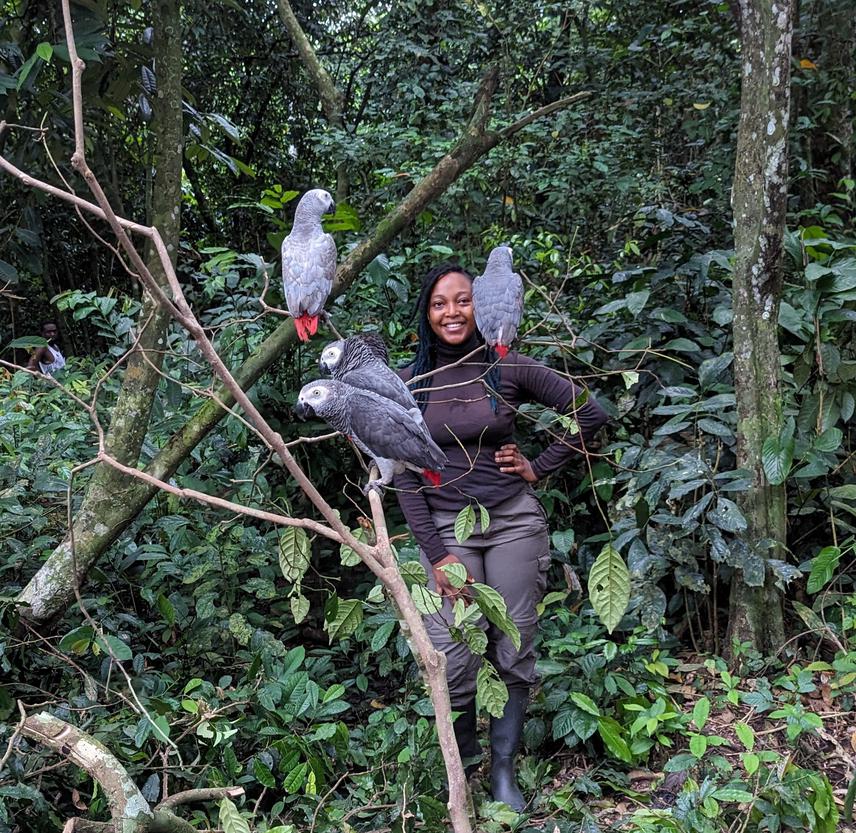Benedicta Ngwuh Ninying
The African Grey Parrot (Psittacus erithacus) is a very captivating and intelligent species, renowned for its remarkable ability to mimic human speech and long-life span as a pet. However, their very existence is severely threatened by habitat destruction, hunting, and the illicit pet trade. In the midst of these challenges, Lobéké National Park in Cameroon stands as a critical stronghold for the African Grey Parrot, representing one of the last supports of the species in its natural habitat. Lobéké despite its pivotal role as a refuge for the African Grey Parrot, faces a critical challenge posed by the illegal pet trade, a challenge that persists due to the limited understanding of the movement patterns and habitat utilization of the African Grey Parrots. Additionally, habitat degradation and fragmentation, driven by factors such as logging and encroachment, poses a significant challenge that affect both the parrots and the delicate ecological balance of the park. Lastly, lack of knowledge of the perspective of the people surrounding the park regarding the African Grey Parrots has made it difficult for the conservation team to develop and implement a conservation strategy.

Rescued African grey parrots with from the Bolo Forest Clearing in the Lobéké National Park with Eco-guard Serika Modeste Aboungo who was part of the mission.. © Biloa Donatien/Conservator of the Lobéké National Park.
This study aims to explore the movement ecology of African grey parrots in Lobéké National Park and investigate their seed dispersal role across different levels of plant diversity. We will mount ten 15g e-obs transmitters on the parrots to track their movement patterns. We will also carry out field surveys to study their behaviours in the wild and how they use their habitats. The tracker data will be analysed using QGIS Software to determine the seasonal movements of the parrots, the routes they take, and the specific areas they frequent. This knowledge will help identify potential threats, and areas requiring enhanced protection. Also using seed dispersal assessment, we will determine how the parrots contribute to the regeneration of their habitat and the Congo Basin. Lastly, questionnaires will be used to determine the perspective of the community living around the park. With the results from the questionnaires, we will develop sensitization and awareness raising campaigns in these communities, conservation education programs will also be done in three primary schools all with the aim to promote the conserving the conservation of the African Grey parrots in and around the Lobéké National Park.